Negoro-ji
The Negoro-ji (根来寺) complex of Buddhist temples stands on the side of, and is surrounded by, the sacred peaks of the Katsuragi Mountains, which dominate the horizon at the northern end of the city of Iwade, Wakayama in Japan.
| Ichijōsan Negoro-ji 根来寺 | |
|---|---|
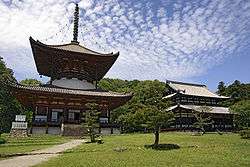 | |
| Religion | |
| Affiliation | Shingi Shingon |
| Deity | Dainichi Nyorai (Vairocana) |
| Location | |
| Location | 2286 Negoro, Iwade-shi, Wakayama-ken |
| Country | Japan |
| Architecture | |
| Completed | 1130 |
| Website | |
| http://www.negoroji.org/ | |
History
In 1087, En no Gyōja established this area as a center for promoting Buddhism. Hōfuku-ji, as it was originally called, was built with the contributions of a devotee known as Hōfuku-Chōja who lived in the vicinity.
In 1132, the ex-Emperor Toba donated this temple, with nearby manors, to the famous high priest Kogyo-Daishi; this new estate was called Ichijō-zan Daidenpon Negoro-ji. Kōgyō-Daishi, widely renowned as the restorer of the Shingon sect of Buddhism, moved here with his pupils, from Mount Kōya. After settling at Negoro-ji, Kōgyō-Daishi laid out his far-sighted plans and initiated the construction of the Enmyō-ji and Jingū-ji in the Negoro-ji temple grounds. Even after his death, in 1143, the Negoro-ji complex was influential and prosperous as the head seminary for Shingi sect of Shingon Buddhism for approximately 200 years. During the height of its influence in the late Muromachi period, about 2700 temples stood on the mountainside in the spacious grounds of Negoro-ji.
In 1585, buildings (except the main pagoda and a few others) were burnt down during the Siege of Negoro-ji by Toyotomi Hideyoshi. He feared the growing military power of the priesthood and the Negoro-gumi (warrior monks of the temple) who were skilled in the use of firearms.
In 1623, the head of the Kii branch of the Tokugawa feudal clan, Tokugawa Yorinobu, initiated the reconstruction of the temple grounds. Through re-buildings over many decades during the Edo period, the Negoro-ji was completely transformed.
Images
 Negoro (spelled Negru) on an early Western map of Japan (Abraham Ortelius, 1572)
Negoro (spelled Negru) on an early Western map of Japan (Abraham Ortelius, 1572)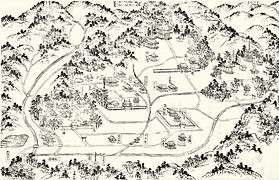 Negoro Temple, early 19th century (Kii no kuni meisho zue)
Negoro Temple, early 19th century (Kii no kuni meisho zue)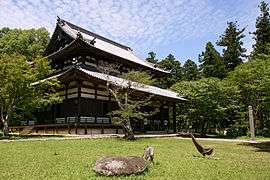 Dai-denpō-dō
Dai-denpō-dō- Statues of Kongō-Satta, Dainichi-nyorai (Vairocana) and Sonshō-butchō (Dai-denpō-dō)
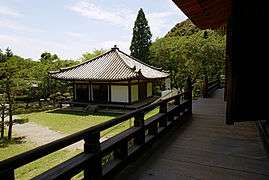 Daishi-dō
Daishi-dō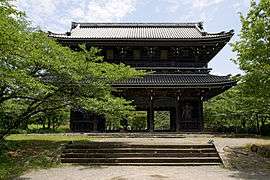 The main gate (Daimon)
The main gate (Daimon)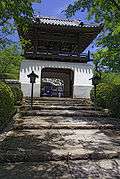
 Courtyard
Courtyard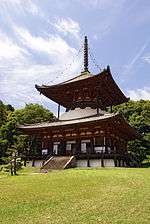 Pagoda (1496, National Treasure)
Pagoda (1496, National Treasure)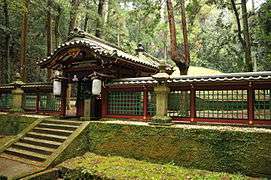 Mausoleum of Kakuban
Mausoleum of Kakuban
See also
- Siege of Negoro-ji
- Negoro-gumi
- List of National Treasures of Japan (Temples)
- The 100 Views of Nature in Kansai
External links
| Wikimedia Commons has media related to Negoroji. |